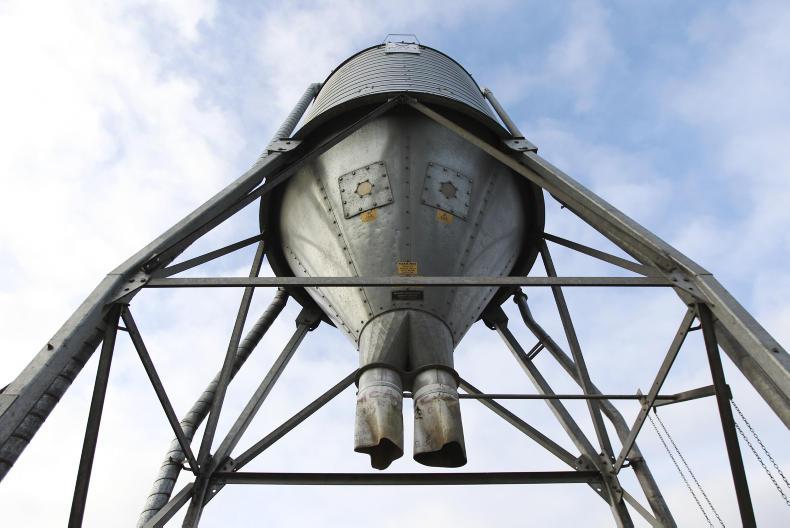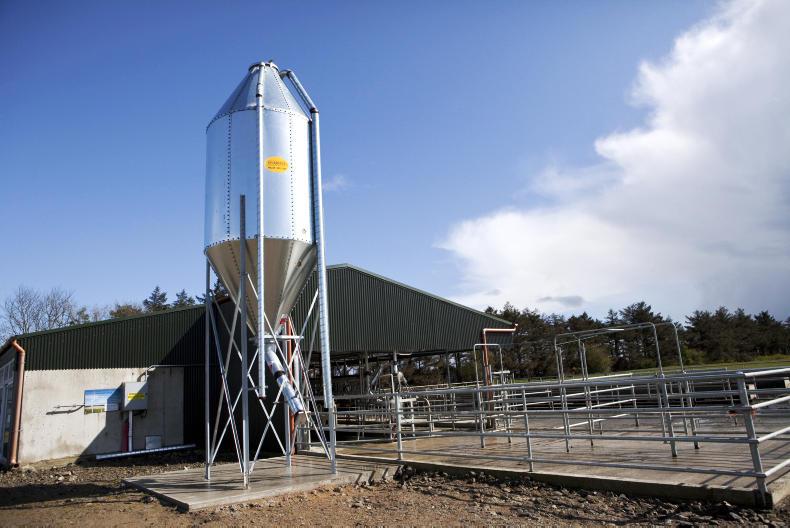In last week’s Irish Farmers Journal we looked at how spreading extra fertiliser and selling livestock that are not core to the business can help to increase the amount of silage made this summer. Spreading more fertiliser increases the supply of grass, while selling extra or surplus stock will reduce the demand for grass on the farm, thereby increasing the amount of grass that can be turned into winter feed.
Another option which many farmers are considering is to feed extra meal to cows this summer. This reduces their demand for grass so they eat less of it, meaning more grass can be made into silage. The question is: does this policy make financial sense?
Most farmers who feed supplement do so to increase milk yield. The thinking is that feeding a digestible and energy-dense supplement like meal when at grass will increase overall dry matter intake and cows will produce more milk. The problem experienced by many when doing this, is called the substitution effect. So rather than increasing overall intake, cows fed supplement will eat the meal but eat less grass, so overall dry matter (DM) intakes don’t increase in line with the extra meal.
How much less grass they will eat depends on grass quality, how much grass the cows are allocated, the type of cow, the stage of lactation and the type of meal being fed. Nutritionists and farmers that are looking to get a milk response from meal see the substitution effect as a big negative. A high-substitution effect means that there is only a small increase in dry matter intake as a result of feeding the meal, so the milk response will be small.
But for farmers who want to reduce grass intake, the substitution effect is a good thing as it means that less grass is eaten. Substitution rate is highest in the spring when herds are in early lactation and decreases gradually during the year. In spring, it could be as high as 0.5. This means that for every 1kg of meal fed, grass eaten declines by 0.5kgDM. Research work has shown that the substitution rate declines by 0.1 between spring and summer and 0.1 between summer and autumn. This is why farmers usually see a milk response to feeding meals in autumn – the overall dry matter intake increases.
If we take a substitution rate of 0.4 in summer, it means that for every 1kg of meal fed, 0.4kg less grass will be eaten. If meal is costing €260/t (which is 30c/kgDM) and is being fed with the sole purpose of increasing the amount of silage that can be made, it will be very expensive silage. Effectively, that 0.4kgDM of grass, costs 30c to get there. This is before land charges, utilisation losses and harvesting costs are taken into account (usually around 15c/kgDM).
Roughly speaking, this means that every tonne of meal bought in makes an extra 1.5 bales of silage. At €260/t, the silage is costing €173/bale, before all the other costs are factored in. But that’s not the full picture, because even at high-substitution rates, some feed will go towards extra milk production. Calculating this response is not easy as there are many variables involved, particularly around grass quality and cow type.
If we assume that the response in summer time will be 0.6kg of milk for every 1kg of meal fed, at €260/t for meal and a milk price of 35c/l the kilo of meal is costing 30c/kgDM and for that the farmer is getting 21.6c/kg back in extra milk produced.
As things stand, the price of meal is too high and the price of milk is too low to justify the cost of feeding the meal.
Example
 Let’s presume farmer Joe is milking 100 cows on a 40ha farm with all heifers contract-reared elsewhere. He used up all of his silage stocks in the winter just gone and is anxious to make as much silage as possible this summer. He normally feeds 2kg of meal during the breeding season, but is thinking about feeding his herd 4kg of meal for all of May and June this year, which he expects will increase the amount of silage made and milk sold.
Let’s presume farmer Joe is milking 100 cows on a 40ha farm with all heifers contract-reared elsewhere. He used up all of his silage stocks in the winter just gone and is anxious to make as much silage as possible this summer. He normally feeds 2kg of meal during the breeding season, but is thinking about feeding his herd 4kg of meal for all of May and June this year, which he expects will increase the amount of silage made and milk sold.
Based on his 100 cows, feeding 4kg of meal per cow per day for May and June will mean Joe will feed a total of 24t of meal costing him €6,240 at €260/t. This is twice what he fed last year. Presuming the meal is 15% moisture and the substitution rate is 0.4, then a total of 4.1t of grass dry matter will not be eaten by the cows as a result of eating the extra meal. If this grass is converted to silage at 85% utilisation rate, he will have an extra 3.49t of silage dry matter by the end of June, equivalent to 16 extra round bales of silage.
On the milk side, he is expecting a milk price received of 35c/l for May and June. Last year, he produced 125,000l of milk in the two months. Because he plans to feed an extra 2kg of meal per cow per day this year, he expects to produce an extra 6,000l over May and June (a response of 0.6kg of milk to 1kgDM of meal). At 35c/l this will net him an extra €2,100, but the extra meal will cost him €3,120.
So at the end of June, he will have spent an extra €3,120 on meal compared to last year and will have produced an extra €2,100 worth of milk and have an extra 16 round bales of silage in the yard. Is he any better off? It looks not as he lost €1,020 on the milk side, but has an extra 16 bales valued at €30/bale. However, it cost Joe at least €20/bale to get it there taking fertiliser and harvesting costs into account. At the end of the day, the extra meal feeding was going to cost Joe €860 for the extra 16 bales. He is now wondering if it is worthwhile.
Issues
A problem with feeding high levels of meal during the summer is that achieving a good clean out when feeding a lot of meal is hard to do.
Cows won’t work hard to clean out dungpads and get good residuals if they are getting high levels of meal in the parlour. This is noticeable when feeding rates go over 2kg/day.
As a result of poor cleanouts, grass quality in the next and future rounds will be poorer resulting in lower milk yields and fat and protein percentages. This will reduce any residual benefits of higher milk production. This should be taken into account when planning on feed use this summer.
For me, feeding extra meals during the summer to make more silage is the poorest option for dairy farmers looking to increase silage stocks. The substitution rate is either too high or too low, depending on your outlook. Feeding 1kg or 2kg for vitamins and minerals is ok, but anymore is a false economy. I think it would make more sense for farmers to focus more on improving the quality of the grass in front of the cows and spread more fertiliser to increase growth, than to put in supplement.
It’s better to feed lower cost meals during the winter as a supplement to silage than feed meals in the summer to try and make silage.






 This is a subscriber-only article
This is a subscriber-only article










SHARING OPTIONS: